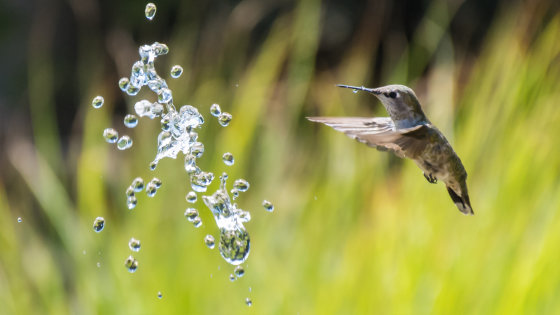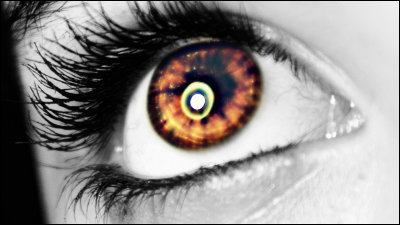A three-year experiment shows that birds are watching 'color' that humans can not even imagine

The human eye perceives three light wavelengths, red, green, and blue, and identifies many 'colors' by combining them, but organisms that identify colors that humans cannot perceive in the natural world. Also exists. In a three-year experiment, a surprising new paper has been published that shows that birds can even see 'ultraviolet rays' that humans cannot identify and see a world completely different from humans.
Wild hummingbirds discriminate nonspectral colors | PNAS
Hummingbirds Can See Colors We Can't Even Imagine, Experiment Reveals
https://www.sciencealert.com/hummingbirds-can-see-colours-we-can-t-even-imagine-experiment-reveals
The human eye has three cone cells, a red cone (L cone), a green cone (M cone), and a blue cone (S cone), and each cone perceives a color. We obtain 'color vision' by transmitting information to the brain. One cone cell distinguishes about 100 kinds of colors, and it is said that a total of 1 million colors can be distinguished by the combination of 3 colors.
Unlike humans, reptiles and birds have four different types of cones, and therefore have a different color identification process. Birds are said to be able to detect ultraviolet light with a wavelength of 300 to 330 nanometers, and it has been thought that the combination of 'ultraviolet and red' and 'ultraviolet and green' can be identified, but it should be confirmed by experiments. Was said to be very difficult.

Meanwhile, a research team such as Marie Caswell Studdard, an evolutionary biologist at Princeton University, revealed the color vision of birds in a three-year experiment.
The research team first created an LED light tube that lights up with 'non-spectral colors' that can not be perceived by the human eye and 'spectral colors' that can be perceived. Next, the research team prepared several 'containers of sugar water' and 'containers of just water', and installed LED light tubes next to each container. At this time, the LED light tube next to the sugar water was lit in a different color than the LED light tube next to the plain water container. The researchers put hummingbirds in a line with multiple containers and allowed them to drink water, then rearranged the containers to see if the birds could identify the color of the LED light tube.
A series of randomized experiments showed that hummingbirds could easily identify non-spectral colors.
Harold Eyster, a PhD student at the University of British Columbia who participated in the experiment, said, 'It was an amazing sight. 'Ultraviolet and green light' and 'green light' are the same for us, but hummingbirds are sugar water. I continued to properly select the 'ultraviolet and green light' that indicates that the 'is in. This experiment gave us a little bit of the world the hummingbird is seeing.'

The research team also analyzed 1000 bird feathers and 2400 plants, and announced that one-third of the colors in them could be 'non-spectral'. This means that, in the perception of the world, birds have a completely different perspective from humans. Researchers believe that showing more non-spectral colors to birds will help them to better understand their vision. In addition, by conducting further experiments, I think that it will become clear that 'what kind of colors are non-spectral colors actually?'
Related Posts:







